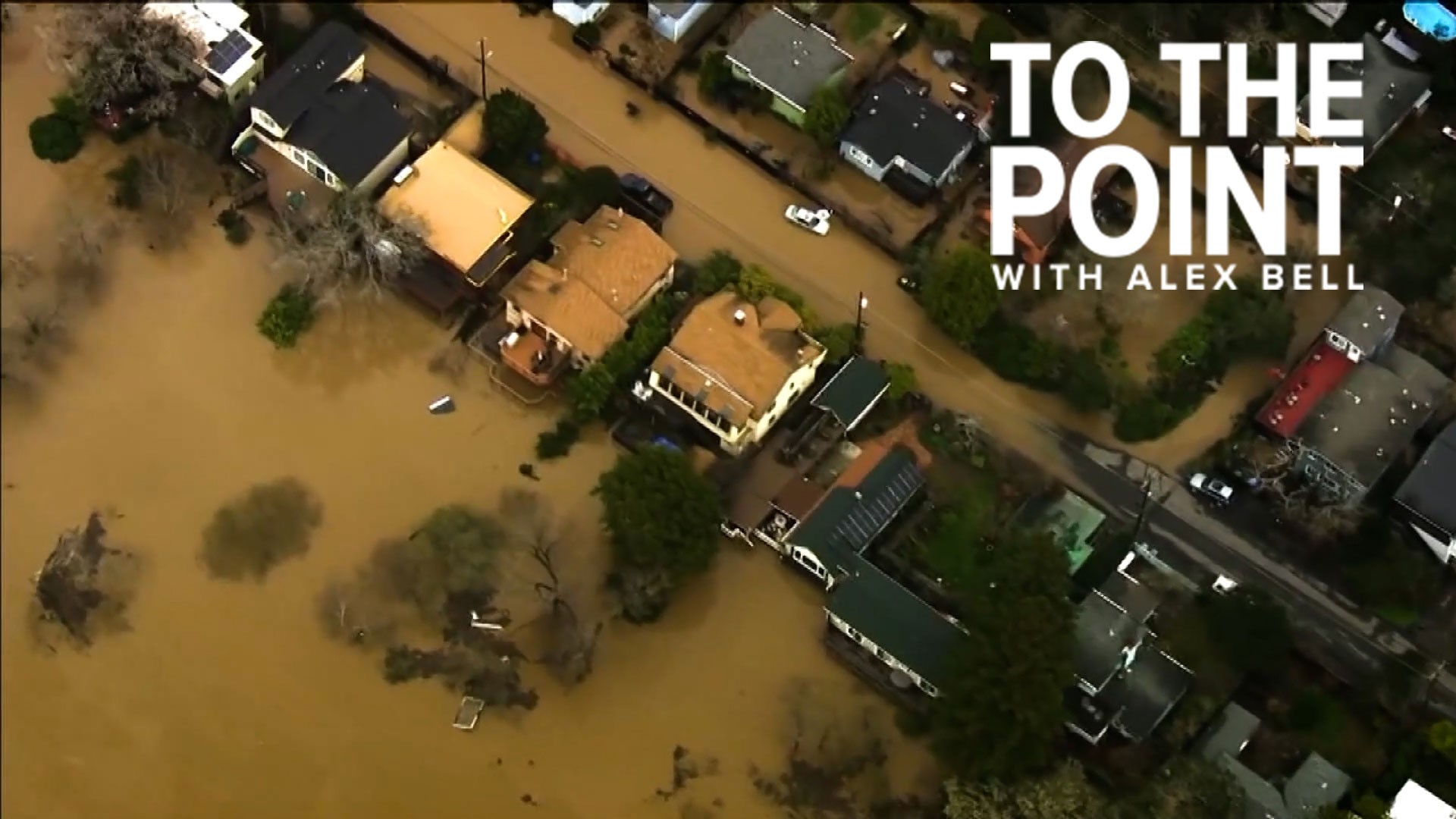SACRAMENTO, Calif. — Imagine the biggest storm you have been through — cold, hard rain for a few days. Ponding on roads and creeks. Rivers running high.
Well, what if the rain didn't stop, the creeks rose higher, and the rivers became an inland salt-less sea spanning hundreds of miles? The water once seen as our friend would become our biggest enemy.
"When it started raining in November, people started to notice that winter's coming early," said Old Sac Underground tour guide, Shawn Turner. "Then right before Christmas, the storms really hit."
For folks living in California in 1861 and 1862, this wasn't a bad dream, it was a nightmare. Their livelihoods were washed away.
"There proceeded to be continual rain for 43 to 45 days. The storm was started with a heavy cold snow, followed immediately by a very warm rain that washed down all that snow," said Turner.
Turner takes visitors in Old Sacramento back to this time and place of the great flood. To do this, you must go down to the underground where the city was originally built.
"Because of that heavy amount of water and debris coming down out of the hillsides, that levee was no match for the American River, breached the levee approximately where businesses are now," said Turner. "The water then came in and flowed behind the city."
Sacramento was inundated and annihilated by the biggest flood ever recorded by the new settlers.
"As the story goes, life must go on and in the middle of the great flood, we had to swear in a new governor," said Turner. "His name was Leland Standford and he lived right here in downtown Sacramento. He had to take a rowboat to the capitol to be sworn in. The water would remain here for the next three months. The great flood created an unbroken body of water for 250-300 miles. It also flooded Southern California as well. This one-two punch bankrupted the state, and propelled Sacramento to look forward, and lift everything up.
We're standing next to the foundations for the Hastings building, Benjamin Franklin Hastings and company building, this building has been lifted up. Up to the current level, this was a 500-ton brick building. That was one of the hundreds of buildings that were lifted over a 13-year span to lift the central business district up out of the floodwaters."
Since the great flood of California and the lifting of Sacramento, we haven't seen the water that high... but we know there will be another time.
As chaotic as California weather can be, it's also consistent. History tells us well before we could document it that these floods happen every 100 years or so, and more are coming.
The confidence of catastrophe casting lies in our understanding of the main ingredient of these floods: atmospheric rivers — or ARs.
"An atmospheric river is literally a river in the sky," said Marty Ralph, an expert on atmospheric rivers. "It's just a river of water vapor moved by the wind rather than a terrestrial river in which liquid is moved by gravity."
Ralph says calling these ribbons of moisture a river isn't an exaggeration. In fact, it might be understating California's primary source of water.
"So, an average atmospheric river transports the equivalent to like 25 Mississippi Rivers worth of water. Its vapors, when that hits shore or hits the mountains, it's forced upward and some of that can condense into clouds and rain and snow in vast quantities," said Ralph.
40-60% of California's water comes from ARs. If you get less than you expect, you are in a drought. If you get more, you flood. Much of the research lately is focused on forecasting atmospheric rivers, especially the super high-end ones capable of breaking the flood banks.
The great flood was the blueprint for a megaflood scenario called the "Arkstorm Project" back in 2011, a collaboration of more than 100 scientists and officials. At the time, it was the best understanding of the worst-case scenario.
The report was sobering, to say the least. A cycle of major atmospheric rivers would "overwhelm the state's flood protection system," prompt evacuations for more than a million people, and cause nearly $1 trillion in damage — 3x the damage as a massive California earthquake we've also feared.
In short, a flood of this magnitude is California's biggest threat. Just like that earthquake, we know it's coming, except the future megafloods will likely be worse.
"The most extreme precipitation events, which in California almost always means the most intense atmospheric river storms, are likely to become significantly more intense," said Dr. Daniel Swain, a climate scientist at UCLA.
Swain, co-author of Arkstorm 2.0, is researching what a megaflood could look like in our warming climate. He found these storms are now twice as likely to happen in any given year.
Right now, and in the future, we can expect 2-4x more runoff and flooding potential than we have historically observed.
"This ends up being a really critical aspect in the Sierra Nevada in particular, because not only are you seeing atmospheric rivers that bring more water, but more of that water is falling as liquid rain rather than frozen snow," said Swain.
The report has brought our history with megafloods back to the future and understands California's other big one is coming, and we need to be ready.
We realize this report and expert analysis is concerning, to say the least, but other experts and policymakers are aware of this new megadrought probability and are reimagining and rebuilding California's flood protection system.



















